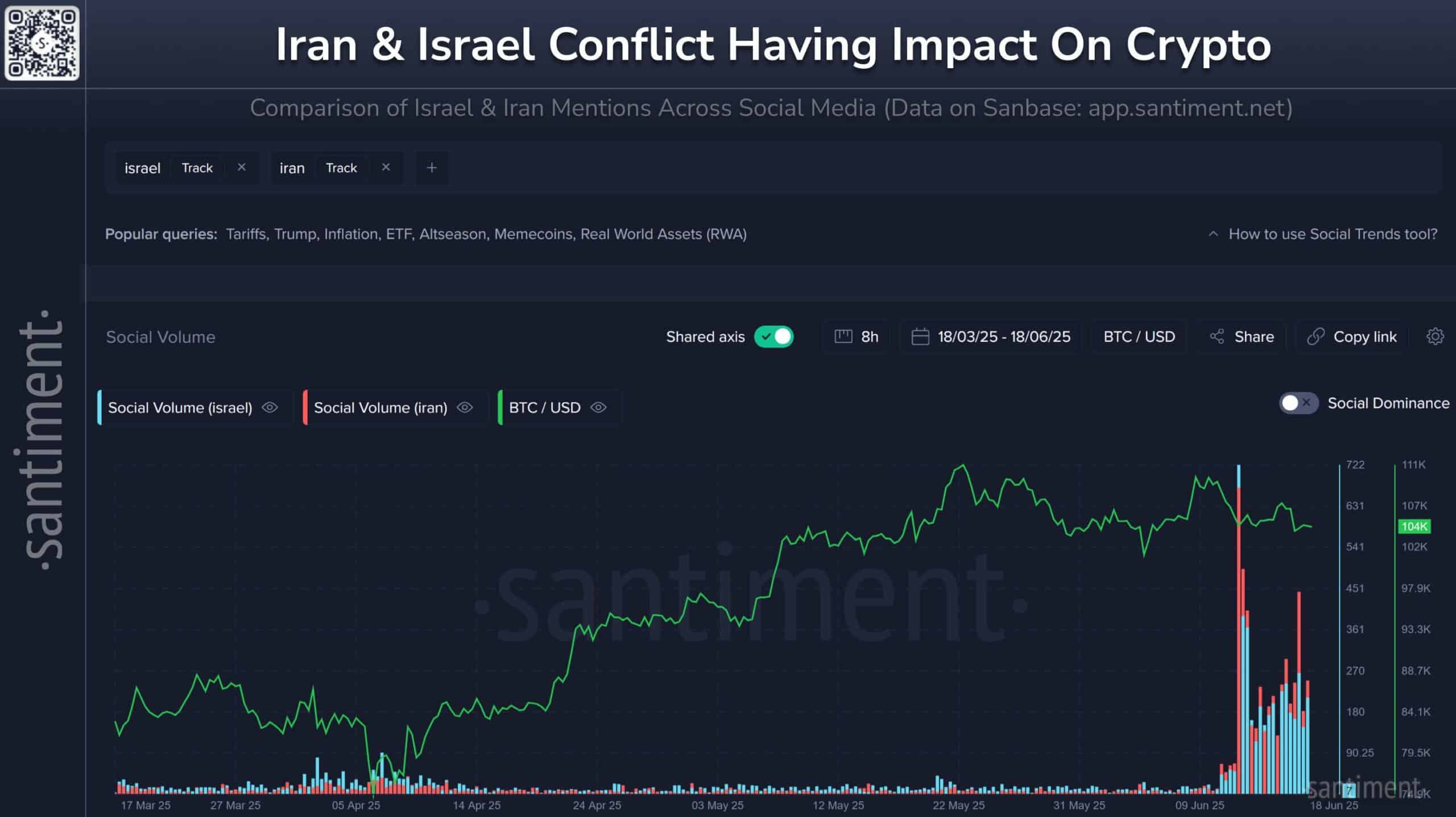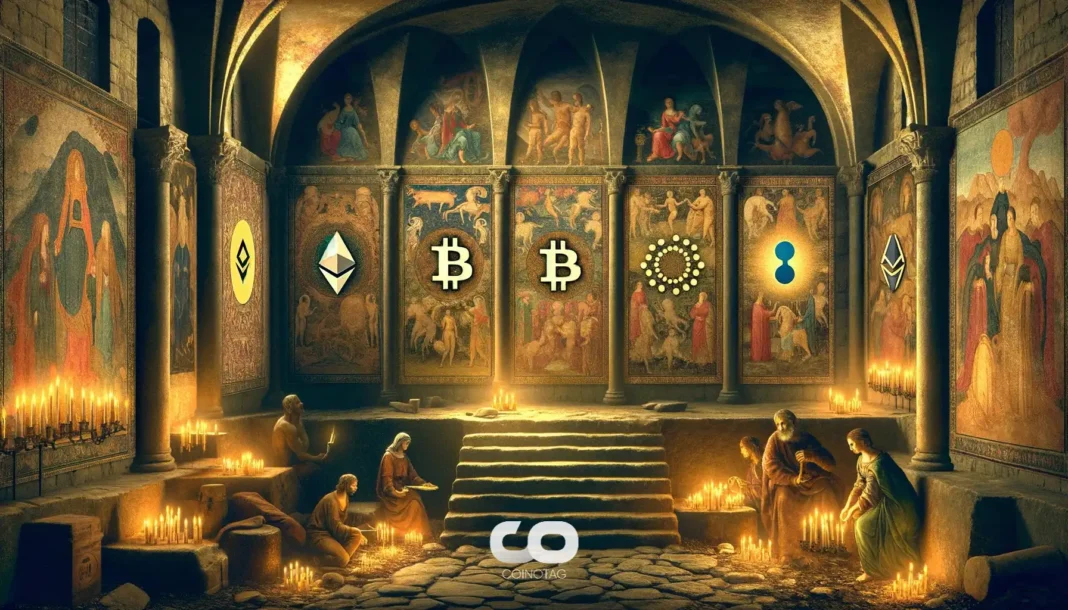-
Geopolitical tensions between Israel and Iran have triggered significant volatility in the crypto market, wiping out $200 billion in market capitalization.
-
Despite the turmoil, Bitcoin’s decline was tempered by strong ETF inflows, reflecting the growing maturity and resilience of digital assets.
-
As Ray Youssef, CEO of NoOnes, noted, “Markets usually don’t like surprises — but lately, crypto doesn’t seem to react much,” highlighting a shift in crypto’s risk profile amid geopolitical crises.
Geopolitical tensions caused a $200B crypto market drop, but Bitcoin’s ETF inflows and evolving behavior helped stabilize prices amid ongoing risks.
Geopolitical Tensions Shake Crypto Markets but ETF Inflows Provide Stability
The recent escalation of conflict between Israel and Iran sent shockwaves through global financial markets, with digital assets experiencing notable turbulence. Bitcoin (BTC) fell approximately 6% within 72 hours, erasing over $200 billion in market capitalization. This sharp decline was accompanied by heightened social media activity, as Santiment data revealed a surge in mentions of geopolitical keywords such as “Israel” and “Iran” during the period from June 12th to 15th.
However, the crypto market demonstrated an increasing ability to absorb shocks. ETF inflows remained robust, injecting over $216 million in net capital during this volatile period. This influx of institutional investment helped cushion Bitcoin’s price drop and supported a swift recovery, underscoring the growing role of ETFs as a stabilizing force in crypto markets.
Social Sentiment and Market Reaction Amid Conflict
The spike in geopolitical tension triggered a pronounced risk-off sentiment among investors, reflected in a 4–6% drop in Bitcoin’s price and a significant contraction in overall crypto market capitalization. Social sentiment turned deeply bearish, yet the market’s reaction was more muted compared to previous crises such as the 2022 Ukraine conflict. Bitcoin’s price stabilized around $104,000 following a temporary de-escalation, demonstrating resilience despite ongoing uncertainties.

Source: Santiment
ETF Inflows as a Key Buffer Against Volatility
Institutional participation through ETFs has increasingly become a critical factor in mitigating crypto market volatility during geopolitical crises. Throughout early to mid-June, ETF inflows remained consistently positive, with notable surges on June 9th, 10th, and 16th. This steady capital injection contributed to Bitcoin’s ability to rebound quickly from initial losses.
As of this period, total net assets under management in Bitcoin ETFs reached $128.18 billion, highlighting the growing institutional confidence in crypto as an asset class. This trend also reflects a shift in Bitcoin’s market behavior, which now more closely resembles that of high-beta technology stocks rather than a traditional hedge asset.

Source: SoSoValue
Crypto’s Evolving Risk Profile Amid Cybersecurity Threats
Despite the geopolitical unrest, crypto markets have shown a muted response to significant cybersecurity incidents. A notable example includes a $49 million hack on Nobitex, Iran’s largest crypto exchange, allegedly executed by the cyber group Predatory Sparrow. Traditionally, such breaches linked to military cyber units would trigger market alarm; however, Bitcoin’s price remained stable near $105,000 with daily volatility under 2.1%, and no widespread panic selling occurred.
This resilience suggests that crypto investors are increasingly differentiating between geopolitical risk and cyber threats, reflecting a maturing market that is less prone to knee-jerk reactions. As Ray Youssef pointed out, Bitcoin no longer functions as a pure hedge but behaves more like a high-beta tech stock, influenced by broader macroeconomic factors.
Market Calm May Be Temporary Amid Lingering Risks
While Bitcoin’s relative stability is encouraging, the potential for renewed volatility remains. The ongoing Israel-Iran conflict continues to cast a shadow over market sentiment. Alphractal’s On-Chain Capflow Sentiment Index indicates a possible shift toward a distribution phase, which often precedes increased selling pressure.
Moreover, macroeconomic uncertainties persist, with October 2025 flagged as a potential turning point for global markets. Investors should remain vigilant, as geopolitical tensions and broader macro risks could disrupt the current calm.

Source: Alphractal
Conclusion
The recent geopolitical tensions between Israel and Iran have tested the resilience of the crypto market, resulting in a sharp but short-lived decline in Bitcoin’s value. Institutional ETF inflows played a pivotal role in stabilizing prices, signaling growing maturity and investor confidence in digital assets. However, ongoing geopolitical and macroeconomic uncertainties suggest that volatility may persist. Market participants should monitor sentiment indicators and geopolitical developments closely to navigate the evolving risk landscape effectively.






